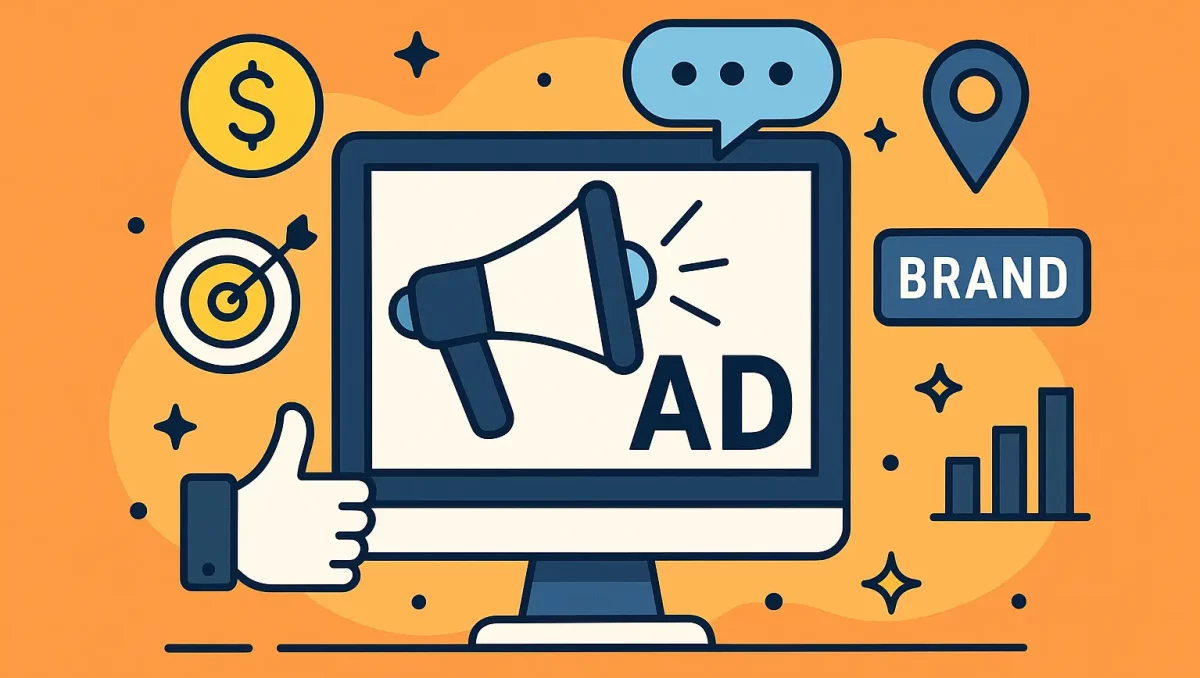I run a tiny snack line. Think crunchy granola and nut bars you can toss in a gym bag. One day, I said yes to print. Real paper. Glossy pages. My hands shook a bit when I saw our logo in a big magazine. It felt old school. But also kind of fresh. It reminded me of reading this fellow founder's story of buying magazine ads for a craft beverage line—their blow-by-blow recap is worth a skim.
Let me explain what I tried, what worked, and what flopped. I’ll share real issues and numbers, the good and the weird.
For a deeper dive into how modern media buying can sync print with digital tactics, I got a ton of value from this concise guide by HuntMads.
My setup and goals
Simple goal: get more sales and a few new wholesale accounts. I wanted reach, but not just eyeballs. I wanted folks who’d buy.
I set one rule. Every ad needed a way to track. I used:
- A short link (mybrand.com/run)
- A QR code
- A code word, like RUN20
It wasn’t perfect tracking, but it helped.
For more ways to fuse print placements with online channels—think QR codes, vanity URLs, and trackable landing pages—check out this exploration of how integrating magazine advertising with digital marketing efforts can enhance overall marketing strategies. By incorporating elements like QR codes or custom URLs in print ads, businesses can bridge the gap between print and digital, directing readers to online platforms for further engagement. This cross-channel approach not only increases brand visibility but also allows for better tracking of campaign effectiveness. (clutch.co) For an ultra-practical example of turning a static print creative into a thumb-stopping vertical clip you can launch on social the same week, I leaned on the step-by-step guide in Snap X—it breaks down quick phone-only lighting setups, snappy copy formulas, and export settings so you can repurpose your magazine artwork into Stories, Reels, or ads without hiring a production crew.
Where I advertised (and what actually happened)
1) Austin Chronicle (local alt-weekly)
- Ad: quarter-page, weekend issue, September
- Cost: not scary
- Creative: big photo, bold price, “Find us at Wheatsville and online”
- Result: 21 QR scans, 9 online orders, 2 new local shops called. One shop owner said, “I saw you in the Chronicle by the music listings.” Cute and useful.
Why it worked: local readers like local snacks. The vibe matched us.
2) Texas Monthly (BBQ issue, May)
- Ad: half-page, full color
- Creative: “Sweet heat trail mix for road trips”—shot on a dusty tailgate
- Result (first 30 days): 61 QR scans, 34 code uses, 3 wholesale calls; one small grocer in San Marcos placed a starter order. Website traffic was up about 22% that week. Sales online paid for most of the spend. The wholesale orders pushed it over the line.
Why it worked: road trip story + Texas pride. People save that issue. Pass-along helped. I got a photo from a reader who circled our ad with a pen.
3) Bon Appétit (Holiday Gift Guide, November)
- Ad: small rectangle in the guide
- Creative: “Stocking stuffer snack pack”—clean, bright, price shown
- Result: slow at first. Then the week after Thanksgiving, boom. 17 code uses in one day. I packed boxes while watching old holiday movies. Two gift box companies emailed. We got into one of them for December.
Why it worked: timing. People buy gifts in bursts. The magazine sat on coffee tables until folks were ready.
4) Runner’s World (Gear Guide, April)
- Ad: third-page
- Creative: “Run, snack, repeat”—a runner’s hand holding our bar, sweaty wristband and all
- Result: 44 QR scans, 26 sales, and one gym in Denver picked us up. Weird twist: more DMs on Instagram than code uses. People posted their race bibs with our bar. That made me smile.
Why it worked: perfect audience match. Also, the photo felt real, not stiff.
5) A fancy fashion mag (not naming it; you know the one)
- Ad: small and chic, black and white
- Result: crickets. Pretty, but no sales bump. Not every crowd wants a snack brand next to perfume and gowns.
Why it flopped: wrong crowd, wrong mood. My mistake.
The quiet parts no one tells you
- Long lead times: I booked two to three months ahead. Holiday? More like four. I had to plan the offer early.
- Paper proof stress: Colors shift in print. My first proof looked dull. The rep said, “Remember CMYK.” We fixed it. Use 300 dpi photos. No fuzzy edges. Build with bleed so they can trim.
- Tracking is messy: Some folks cut out the page and order later. Codes get shared. It’s fine. Look for trends, not perfect math. I kept thinking about the person who answered a stack of apartment ads and exposed what was real versus fluff—their detective work mirrored my own tracking headaches.
- Pass-along is real: I got orders weeks after an issue came out. People stash mags in the car or bathroom. Yep, I said it. There’s something about print that sticks around—this collector who’s been hoarding 1960s ads explains why.
That lingering shelf life is exactly why advertising in magazines can be a powerful tool for small businesses aiming to reach targeted audiences. Magazines often cater to specific demographics, allowing businesses to connect with readers who already have a vested interest in their products or services. Plus, the tangible experience of flipping real pages fosters a deeper bond than a fleeting scroll, and the copies that stick around for months keep working for you long after the initial drop date. (91magazine.co.uk)
What worked best for me
- Match the magazine vibe. Texas Monthly got a dusty truck photo. Runner’s World got sweat.
- Keep the headline loud. One strong line beat three small ones.
- Show the product big. People can’t smell a page, so make the picture do the work.
- Make the next step clear. Big URL. Big QR. A real, simple offer.
- Seasonal timing. Gift guides helped. Road trip issues helped. Back-to-school might fit snacks, too.
What didn’t work
- Tiny text. If I had to squint, it failed.
- Cute codes no one could remember. Keep it short.
- Shoehorning into a glossy fashion mag. Pretty spread. Wrong shoppers.
The money bit (without being weird about it)
Print can cost more than social. But the trust felt higher. Folks believe what they see in a magazine they love. Heck, even a funeral home ad got a conversion when someone actually needed the service—proof that relevance plus trust trumps channel. I watched cost per sale, but I also watched wholesale leads and repeat buyers. Some ads paid back fast. Some paid back slow. A few didn’t pay back at all.
Here’s the thing: one solid wholesale account can carry the whole test.
Little tips I wish someone told me
- Ask for the media kit. Look for audience age, income, and reader habits. Then ask your gut if your product fits the vibe.
- Request placement near related content, if they allow it. Gear guide, food page, travel story.
- Use a vanity URL you can say out loud. mybrand.com/run beats a long string.
- Test one message at a time. Don’t mash five ideas.
- Negotiate. I got a better rate by asking for a first-time test deal.
- Track calls from store buyers. Put that in your math, not just coupon codes.
Who should try magazine ads
- Local brands with local pride
- Food, fitness, travel, home goods
- Products that look great on a page
- Anyone with a clean, clear offer and patience for slow burn results
If print still feels big-budget, peek at this rundown of small-town classifieds that quietly drove real sales for ideas that cost lunch money.
For an entirely different—but equally eye-opening—example of niche targeting, see how a hyper-local adult entertainment listing gains traction in the desert town of Yucca Valley at Erotic Monkey Yucca Valley, a case study that highlights how laser-focused geography and motivated audiences can stretch even the smallest ad budget

